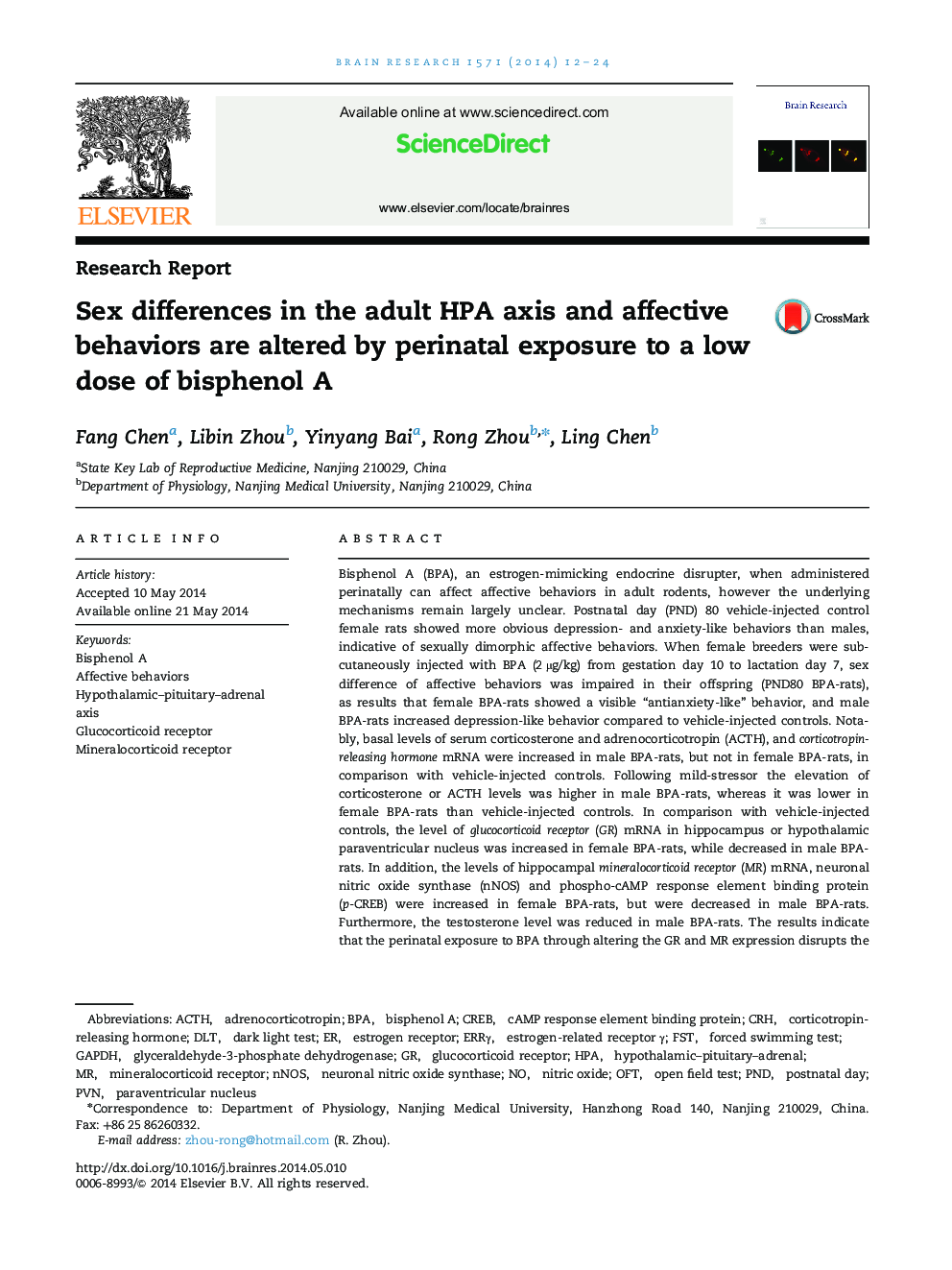| Article ID | Journal | Published Year | Pages | File Type |
|---|---|---|---|---|
| 4324221 | Brain Research | 2014 | 13 Pages |
•The perinatal BPA exposure alters the sex differences in affective behaviors.•The activity of HPA-axis is depressed in female BPA-rats and is enhanced in male BPA-rats.•MR-induced nNOS–CREB signaling is depressed in male BPA-rats.•Serum testosterone level is reduced in male BPA-rats.
Bisphenol A (BPA), an estrogen-mimicking endocrine disrupter, when administered perinatally can affect affective behaviors in adult rodents, however the underlying mechanisms remain largely unclear. Postnatal day (PND) 80 vehicle-injected control female rats showed more obvious depression- and anxiety-like behaviors than males, indicative of sexually dimorphic affective behaviors. When female breeders were subcutaneously injected with BPA (2 µg/kg) from gestation day 10 to lactation day 7, sex difference of affective behaviors was impaired in their offspring (PND80 BPA-rats), as results that female BPA-rats showed a visible “antianxiety-like” behavior, and male BPA-rats increased depression-like behavior compared to vehicle-injected controls. Notably, basal levels of serum corticosterone and adrenocorticotropin (ACTH), and corticotropin-releasing hormone mRNA were increased in male BPA-rats, but not in female BPA-rats, in comparison with vehicle-injected controls. Following mild-stressor the elevation of corticosterone or ACTH levels was higher in male BPA-rats, whereas it was lower in female BPA-rats than vehicle-injected controls. In comparison with vehicle-injected controls, the level of glucocorticoid receptor (GR) mRNA in hippocampus or hypothalamic paraventricular nucleus was increased in female BPA-rats, while decreased in male BPA-rats. In addition, the levels of hippocampal mineralocorticoid receptor (MR) mRNA, neuronal nitric oxide synthase (nNOS) and phospho-cAMP response element binding protein (p-CREB) were increased in female BPA-rats, but were decreased in male BPA-rats. Furthermore, the testosterone level was reduced in male BPA-rats. The results indicate that the perinatal exposure to BPA through altering the GR and MR expression disrupts the GR-mediated feedback of hypothalamic–pituitary–adrenal (HPA) axis and MR-induced nNOS–CREB signaling, which alters sex difference in affective behaviors.
